|
Classic design features have been reinterpreted and brought into the digital age. “Less is more applies here too,” explains Ivo van Hulten, Director Interior Design Style Porsche at Porsche AG. “The Taycan interior combines design elements typical for the brand with a new type of user experience, and impresses with its simple elegance.” Porsche will present the Taycan to a worldwide audience in September 2019. Typical Porsche: a dashboard designed for drivers and a sporty seating position The original 911's cleanly styled dashboard from 1963 was the inspiration. The stated goal was to bring it into the present day. The cockpit signals the start of a new era with its clear structure and a completely new construction. It is clearly driver-focused. The instrument panel has a clean, minimalist and ultra-modern design, and operating the controls is quick and free from distractions. The free-standing, curved instrument cluster forms the highest point on the dashboard. It is clearly focused towards the driver and ensures that everything that's needed for driving is in view. The innovative instrument cluster consists of a curved 16.8-inch screen with the rounded look that's typical of Porsche. A cowl has been omitted, which ensures a slim and modern appearance in the style of high-quality smartphones and tablets. Real glass and a vapour-deposited, polarising filter give anti-reflective properties. Drivers can choose between four display modes for the instrument cluster:
The steering wheel has a light appearance, with two models to choose from. In addition to the basic version, which can be customised with coloured inserts as part of the accent package, Porsche also offers a GT sports steering wheel option. It has a distinctive design with visible screw heads and features a typical Porsche round mode switch which can be used to select the various driving modes. The upper and lower sections of the dashboard stretch across the entire width of the vehicle in the shape of a wing. A central 10.9-inch infotainment display and an optional passenger display are combined to form an integrated glass band in a black-panel look, thereby blending in visually with the interior. All user interfaces have been completely re-designed for the Taycan. The number of traditional hardware controls, such as switches and buttons, have been greatly reduced. Instead, control is intelligent and intuitive – via touch operation or a voice control function that responds to the command “Hey Porsche”. All vehicle configurations for the Taycan, such as Porsche Active Stability Management (PASM), can easily be set up on the central screen via direct access. The driver can quickly access all apps via a clearly structured and customisable home screen. Apps include navigation, telephone, media, comfort and Porsche Connect. With optimised voice control, drivers can access the required function even faster. For the first time, front passengers in the Taycan have the option of their own touch display, allowing them to easily alter settings without distracting the driver. The elevated centre console intensifies the feeling of a low seating position, as you would expect from a Porsche. It features a large 8.4-inch touch panel with haptic feedback. This allows the air-conditioning settings to be altered directly. Integrated handwriting recognition also allows quick address inputs. Every detail has been reduced to the essentials. Like the Porsche 918, the Taycan has a compact direction selector switch in the instrument panel instead of the classic selector lever. This gives the centre console a tidy look and creates storage space. A reduction to the essentials and a clear approach are also evident for the air vents. These have been fully modernised and can be operated intuitively. Traditional, mechanically-operated louvres belong to the past, as airflows are now controlled both digitally and fully automatically ("Virtual Airflow Control"). By clicking the Climate menu, it is possible to switch between “Focused” for fast, directional cooling and “Diffused” for draught-free air conditioning. If the optional four-zone automatic climate control system (“Advanced Climate Control”) has been ordered, an additional 5.9-inch touch control panel with haptic feedback allows the system to be operated from the rear seats. A wide range of personalisation options and innovative material concepts The Taycan’s colour and material design allows for individualised equipment, from traditional through to sustainable and modern. There is also the option of classic leather as well as the sustainably tanned Club Leather “OLEA”, which uses olive leaves in the tanning process. The natural quality of the leather is accentuated by means of a special cloud print. A new feature is the fully leather-free interior with state-of-the-art surface textures. “Race-Tex” material is used, a high-quality microfibre material partially consisting of recycled polyester fibres. Its production has 80 percent less CO2 than traditional materials. The floor covering uses the recycled fibre “Econyl®”, which is made from, among other things, recycled fishing nets. The Taycan is available with a wide range of interior and exterior configurations, in both traditional and modern styles. Interior accents and trims underline the attention to detail, while meeting the highest quality standards typical of Porsche in terms of material characteristics and workmanship. Interior colours Black-Lime Beige, Blackberry, Atacama Beige and Meranti Brown are exclusively available for the Taycan. The optional interior accent package also gives customers a choice of special contrasting colour schemes in black matt, dark silver or neodyme, an elegant champagne tone. The doors and centre consoles can be wood trim, matt carbon, embossed aluminium or fabric. In addition to the host of innovations, there is another detail that no Porsche should be without. Similar to the ignition lock on conventional Porsche models, the power button is located on the left behind the steering wheel. The Cayenne Turbo S E-Hybrid and the Cayenne Turbo S E-Hybrid Coupé draw their system output of 500 kW (680 PS; Cayenne Turbo S E-Hybrid: Fuel consumption combined 3.9–3.7 l/100 km, electricity consumption 19.6–18.7 kWh/100 km, CO2 emissions combined 90–85 g/km; Cayenne Turbo S E-Hybrid Coupé: Fuel consumption combined 3.9–3.7 l/100 km, electricity consumption 19.6–18.7 kWh/100 km, CO2 emissions combined 90–85 g/km) from the intelligent interaction of a four-litre V8 engine (404 kW/550 PS) and an electric motor integrated into the eight-speed Tiptronic S transmission (100 kW/136 PS). The maximum system torque of 900 Nm is available from just above idle. Both models accelerate from a standing start to 100 km/h in 3.8 seconds and reach a top speed of 295 km/h. This exceptional performance is matched by a high level of efficiency: the Cayenne Turbo S E-Hybrid and Turbo S E-Hybrid Coupé can drive for up to 40 kilometres with zero local emissions. The average NEDC consumption is 3.9–3.7 l/100 km (fuel) and 19.6–18.7 kWh/100 km (electric). In addition to the two top models, the hybrid range from Porsche now includes the new Cayenne E-Hybrid Coupé with system power of 340 kW (462 PS; Fuel consumption combined 3.2–3.1 l/100 km, electricity consumption 18.7–17.7 kWh/100 km, CO2 emissions combined 75–72 g/km), torque of 700 Nm, and electric range of up to 43 kilometres. The Cayenne E-Hybrid, which now features a gasoline particulate filter, is available to order again. Speeds of up to 135 km/h with just electric power Like all Porsche plug-in hybrids, the new top-of-the-range model in the Cayenne family is also one of the sportiest vehicles in the premium segment – not in spite of its hybrid powertrain but because of it. In the Cayenne Turbo S E-Hybrid models, the electric motor is located between the V8 engine and the eight-speed Tiptronic S transmission. The two motors are interconnected via a separating clutch inside the hybrid module, referred to as the Electric Clutch Actuator (ECA). In E-Power driving mode, the electric motor can, on its own, propel the vehicle up to a maximum speed of 135 km/h. It can also be used in the other modes for an additional power boost. These modes can be selected via the standard Sport Chrono Package (Hybrid Auto, Sport and Sport Plus). Porsche has taken this boost strategy from the 918 Spyder super sports car. The lithium-ion battery is installed underneath the loadspace floor and has a capacity of 14.1 kWh. The high-voltage battery can be fully charged within 2.4 hours with the standard 7.2 kW onboard AC charger when using a 400-volt connection with a 16-amp fuse. The charging process takes six hours from a conventional domestic socket with a rating of 230 volts and 10 amps. Charging can also be scheduled via Porsche Communication Management (PCM) or the Porsche Connect app (for smartphones and Apple® Watch). Roll stabilisation system, air suspension, and ceramic brakes as standard The Cayenne Turbo S E-Hybrid and the Cayenne Turbo S E-Hybrid Coupé come with extensive factory-fitted equipment as standard: features include the Porsche Dynamic Chassis Control (PDCC) electric roll stabilisation system, Porsche Torque Vectoring Plus (PTV Plus) rear-axle differential lock, the Porsche Ceramic Composite Brake (PCCB) high-performance brake system, 21-inch lightweight alloy wheels in Aero design including wheel arch extensions in body colour, Power Steering Plus, and the Sport Chrono Package. The adaptive three-chamber air suspension, including Porsche Active Suspension Management (PASM), ensures a broad spectrum of typical Porsche driving dynamics and a comfortable ride. Up to 22-inch lightweight alloy wheels and rear-axle steering are also available as optional extras. Full connectivity and auxiliary air conditioning as standard All Cayenne models include full connectivity as standard. This enables online navigation with real-time traffic information, smart online voice control, and extensive Porsche Connect services – including searching for public charging stations. Additional options for all Cayenne derivatives when the new model year starts include wireless Apple CarPlay®, new USB-C ports and a smartphone storage tray with inductive charging function. All hybrid models from Porsche have auxiliary air conditioning as standard. This can be remote-controlled directly via the PCM and via the Porsche Connect app, and enables the vehicle to be heated and cooled even when the ignition is not switched on. All Cayenne models feature LED headlights, a cruise control system with speed limiter function, camera-based pedestrian protection and Park Assist at the front and rear – including a rear-view camera system in the Cayenne Coupé. Optional extras include LED matrix beam headlights, a head-up display, Night Vision with thermal imaging camera, and the Porsche InnoDrive digital co-pilot including adaptive cruise control, lane keeping assist, road sign recognition, active lane guidance, junction assistant and emergency braking.
A double debut: Cayenne Coupé as a V6 and V8 hybrid With the Cayenne Coupé, Porsche has added an even sportier variant to its successful SUV line-up. Highlights of the coupé include sharper lines with a unique roof and rear section, an adaptive rear spoiler, a rear seat bench with the characteristics of two individual seats, and two different roof designs: a panoramic fixed glass roof as standard and an optional carbon roof. Like the SUV, the SUV coupé is now available in two different hybrid versions: in combination with the 4.0-litre V8 biturbo engine and with a 3.0-litre V6 turbo engine. The new Cayenne E-Hybrid Coupé has a system output of 340 kW (462 PS) and a system torque of 700 Nm. In conjunction with the standard Sport Chrono Package, it sprints from a standing start to 100 km/h in 5.1 seconds (5.0 seconds with the lightweight sports packages) and has a top speed of 253 km/h. The average consumption according to the New European Driving Cycle (NEDC) is 3.2–3.1 l/100 km (fuel) and 18.7 – 17.7 kWh/100 km (electric). The purely electric range is up to 43 kilometres. All four different hybrid versions of the Cayenne are now available to order. Customers score sales experience with Porsche higher than any other brand
Atlanta, Georgia. New car customers rated Porsche as the top brand in J.D. Power’s annual Sales Satisfaction Index (SSI) Study released today. Porsche improved its overall ranking by three spots in 2018 compared to last year’s SSI Study. With an increase of 10 points to a total of 828, Porsche ranked higher than any other brand. “This achievement is the result of a customer-focused strategy that has been superbly executed by our 190 U.S. dealer partners,” said Klaus Zellmer, President and CEO of Atlanta-based Porsche Cars North America, Inc. “First and foremost, this award is for our dedicated dealers, who have invested significant time in training for their employees and committed $500 million to improving facilities in just the last five years.” The SSI Study provides an analysis of the purchase experience from a customer perspective. It is based on responses from 25,748 people who purchased or leased new vehicles this year. Particular high points for customers who bought or leased a Porsche between April and May 2018 included the delivery process, dealership facilities, and working out the details of the transaction. Porsche shoppers also expressed satisfaction with salespeople and inventory. Zellmer noted that in the first 10 months of this year, Porsche sales in the U.S. were up 3.2 percent compared to the same period in 2017. “We are glad to see growth going hand-in-hand with continually improving the customer experience,” he said.
The future of mobility is another step closer: Series production of the first purely electric Porsche is set to begin next year. In preparation, the vehicle has now been given its official name: The “Mission E” concept study, the name currently used to describe Porsche’s complete electric offering, will be known as the Taycan.
The name can be roughly translated as “lively young horse”, referencing the imagery at the heart of the Porsche crest, which has featured a leaping steed since 1952. “Our new electric sports car is strong and dependable; it’s a vehicle that can consistently cover long distances and that epitomises freedom”, explains Oliver Blume, Chairman of the Executive Board of Porsche AG. The oriental name also signifies the launch of the first electric sports car with the soul of a Porsche. Porsche announced the name for its first purely electric series as part of the “70 years of sports cars” ceremony.
Two permanently excited synchronous motors (PSM) with a system output of over 600 hp (440 kW) accelerate the electric sports car to 100 km/h in well under 3.5 seconds and to 200 km/h in under twelve seconds. This performance is in addition to a continuous power level that is unprecedented among electric vehicles: Multiple jump starts are possible in succession without loss of performance, and the vehicle’s maximum range is over 500 km in accordance with the NEDC.
Names with real meaning
At Porsche, the vehicle names generally have a concrete connection with the corresponding model and its characteristics: The name Boxster describes the combination of the boxer engine and roadster design; Cayenne denotes fieriness, the Cayman is incisive and agile, and the Panamera offers more than a standard Gran Turismo, which is what allowed it to win the Carrera Panamericana long-distance race. The name Macan is derived from the Indonesian word for tiger, with connotations of suppleness, power, fascination and dynamics. Future investment doubled Porsche plans to invest more than six billion euro in electromobility by 2022, doubling the expenditure that the company had originally planned. Of the additional three billion euro, some 500 million euro will be used for the development of Taycan variants and derivatives, around one billion euro for electrification and hybridisation of the existing product range, several hundred million for the expansion of production sites, plus around 700 million euro for new technologies, charging infrastructure and smart mobility. Extensive modifications and expansion at the Zuffenhausen headquarters At the Porsche headquarters in Zuffenhausen, a new paint shop, dedicated assembly area for the Taycan and a conveyor bridge for transporting the painted bodies and drive units to the final assembly area are currently being constructed. The existing engine plant is being expanded to manufacture electric drives and the body shop will also be developed. Investment is also planned for the Weissach Development Centre. Production of the Taycan is creating around 1,200 new jobs in Zuffenhausen alone.
A range of over 500km (NEDC) and recharging of 400km in only 15 minutes. Time to experience a completely new side of emobility and discover far flung destinations.
Watch this video to learn all you need know about the Mission E Cross Turismo. Read more about the car here: www.porsche.com/Cross-Turismo Newest Porsche brings ‘E-performance’ option to Cayenne line-up
Atlanta, Georgia. The 2019 Porsche Cayenne E-Hybrid solidifies its place in the lineup while making significant advancements over both the standard Cayenne and the preceding Cayenne S E-Hybrid it replaces. Those advantages include more power, quicker acceleration, a faster top speed, and increased electric-only range. The Porsche Cayenne E-Hybrid uses the same three-liter mono-turbo V6 as the Cayenne, but significantly increases total horsepower and torque by integrating an electric motor.
The latest Porsche “E-performance” model adopts the same hybrid boost strategy as the 918 Spyder super sports car. By leveraging the instantaneous torque of the electric motor and the power of a turbocharged V6 gasoline engine, the Cayenne E-Hybrid has an especially broad power band that improves its acceleration capability. In addition to enhanced performance, the new 2019 Cayenne E-Hybrid also adds the Sport Chrono Package, Porsche Active Suspension Management (PASM), and Auxiliary Cabin Conditioning to its list of standard equipment. In conjunction with the launch of the 2019 Cayenne E-Hybrid, Porsche will also introduce several new features to the broader Cayenne model line. They include massaging seats, a heated windshield, a head-up display, and for the first time in any Porsche, 22-inch wheels. Aesthetic changes specific to the Cayenne E-Hybrid are aligned with other current Porsche plug-in hybrid models. The visual distinctions are Acid Green brake calipers and matching outlines around all of the badges. Newest Porsche PHEV Powertrain The latest Porsche plug-in hybrid includes the third new hybrid powertrain from Porsche since 2017. It combines a three-liter mono-turbo V6 engine with 335 horsepower and 332 lb-ft of torque with an electric motor that creates 134 horsepower and 295 lb-ft of torque. The result is a total system output of 455 horsepower from 5,250 to 6,400 RPM and 516 lb-ft of torque from 1,000 to 3,750 RPM. Acceleration from zero to 60 MPH happens in 4.7 seconds (-0.7 seconds vs. Cayenne S E-Hybrid) on to a ¼ mile time of 13.3 seconds (-0.9 seconds vs. Cayenne S E-Hybrid) and a top track speed of 157 MPH (+6 MPH vs. Cayenne S E-Hybrid). Tiptronic S transmission and new hybrid module Porsche completely re-engineered the hybrid powertrain componentry at work in the Cayenne E-Hybrid as compared to the Cayenne S E-Hybrid of the previous generation. The hybrid module, which is positioned between the engine and eight-speed Tiptronic S transmission, consists of an electric motor and a separating clutch. In contrast to the previous electro-hydraulic system with a spindle actuator, the separating clutch is operated electromechanically for quicker reaction times. The new Tiptronic S transmission, which was developed for the third-generation Cayenne range, offers significantly faster, smoother, and more comfortable shifts. This also leads to a reduced interruption of tractive force while changing gears. As with other Cayenne models, the top track speed is reached in sixth gear, leaving the remaining two gears intentionally long for efficient cruising. Standard Porsche Traction Management all-wheel drive With standard Porsche Traction Management (PTM), the Cayenne E-Hybrid has an active hang-on all-wheel drive system with an electronically regulated, map-controlled multiplate clutch. With its broad range of torque distribution, the system offers clear benefits in terms of driving dynamics, agility, traction control and off-road capabilities. Porsche Active Suspension Management (PASM) is included as standard equipment, though customers may upgrade to the same three-chamber air suspension system that is offered in the rest of the Cayenne lineup. Drive Modes in Detail As with other Porsche E-performance models, the Cayenne E-Hybrid shares a boost strategy with the 918 Spyder. By offering a wide range of drive modes, the powertrain is able to meet a wide range of specific needs ranging from all-electric motoring to high performance driving. The Sport Chrono Package, including a mode switch integrated into the steering wheel, forms part of the standard equipment on the Cayenne E-Hybrid. The mode switch and the Porsche Communication Management system are used to select the various driving modes. These include the familiar “Sport” and “Sport Plus” modes from the other Cayenne models equipped with the Sport Chrono Package, while the Cayenne E-Hybrid also adds four hybrid-specific modes: “E-Power”, “Hybrid Auto”, “E-Hold” and “E-Charge”. E-Power: In “E-Power” mode, the Cayenne E-Hybrid drives up to 44 kilometers, based on the New European Driving Cycle (NEDC), on electricity alone. Hybrid Auto: The “Hybrid Auto” mode is a completely new development. When this mode is selected, the Cayenne changes and combines the drive sources automatically for ultimate efficiency. E-Hold: The “E-Hold” mode allows drivers to conserve the current state of charge so they can later switch to electric (and therefore zero-emissions) mode in an environmental zone at their destination, for example. E-Charge: In “E-Charge” mode, the gasoline engine generates more power than is needed to move the car. The excess energy is channeled into the battery for later use. Sport and Sport Plus: The highest level of drive performance is made available in the “Sport” and “Sport Plus” modes. The V6 is active continuously in these modes. In “Sport” mode, the battery charge is always maintained at a minimum level to ensure that sufficient boost reserve capacity is available when needed. “Sport Plus” mode is all about maximum performance. In addition, the battery is charged as quickly as possible to ensure maximum performance. Battery power: plugging in and taking off Power is stored in a 14.1 kWh battery pack housed in the rear of the chassis beneath the load floor. While running on electricity alone, the Cayenne E-Hybrid can travel up to 83 miles per hour and up to 44 kilometers (NEDC). EPA fuel economy figures and electric range are unannounced at this time. Battery capacity of the Cayenne E-Hybrid increases by roughly 30 percent to 14.1 kWh when compared to the preceding model. The liquid-cooled battery consists of eight modules with 13 prismatic lithium ion cells each. The packaging size of this battery pack is the same as the battery used in the previous Cayenne S E-Hybrid, but it has improved energy density. Using a 230-volt, 32 amp connection and the optional 7.2 kW onboard charger, it is possible to recharge a fully depleted battery in 2.3 hours. Using a 230-volt connection with 10 amps and the standard 3.6 kW on-board charger, replenishing a fully depleted battery requires 7.8 hours. In both cases, the recharging process is quicker with the new Cayenne E-Hybrid than in prior models. The charging process is controllable either via Porsche Communication Management (PCM) or remotely when using the Porsche Connect app. With an enabled smartphone, owners gain remote access to climate controls, and charge monitoring. All of these features are included as standard equipment and function even when the ignition switch is turned off. Porsche Connect can also be used to find and filter charging stations and set them as a navigation destination. Mirroring the subtle aesthetic hybrid indicators on the exterior, the cabin features Acid Green needles on the Sport Chrono dial and the tachometer as well as hybrid-specific displays in the gauge cluster and within the PCM screen. The displays offer information about the state of charge, electricity consumption and hybrid-specific drive mode selections. Porsche is offering a head-up display for the first time. The full-color projection is customizable, height-adjustable, and it puts key information including driving speed, engine speed, driving mode, and navigation information and the current drive mode within the driver’s direct line of sight. Models equipped with the Sport Chrono package – such as the Cayenne E-Hybrid – can see information relevant to the added performance capability including lap times and cornering g forces. Models equipped with the Off Road package are able to display similarly relevant information including hillside gradients, steer angle, a compass, and hill descent control speeds. Starting with the 2019 Cayenne E-Hybrid, Porsche InnoDrive will also be available. As a step beyond adaptive cruise control, this system combines already existent traffic sensing systems with onboard map data. The result is a vehicle that can “look” 1.8 miles ahead to select gearing intelligently, and that can compute when best to coast and the best balance between the gasoline and electric portions of the powertrain based on upcoming corners and changes in grade. The system is also capable of recognizing speed limits and adjusting vehicle velocity in cases where temporary speed restrictions are in place. Market launch and pricing The new Cayenne E-Hybrid is expected to begin arriving at U.S. dealers in early 2019 with a base MSRP of $79,900 excluding options and the $1,050 delivery, processing and handling fee. With the Mission E Cross Turismo, Porsche will be unveiling the concept study of an electrically driven Cross Utility Vehicle (CUV) at the Geneva Motor Show. This car has many talents and is aimed at people who like to spend their free time travelling, playing sport and pursuing other outdoor activities. Thanks to all-wheel drive, every ski slope is easy to reach, while the flexible interior creates space for all kinds of sports equipment and modern load-carrying systems facilitate the transport of surfboards or a Porsche e-bike. The strengths of the four-door four-seater include an emotional design with striking off-road elements as well as an innovative display and operating concept with touchscreen and eye-tracking control. Measuring 4.95 metres in length, the concept vehicle has all-wheel drive and an 800-volt architecture, prepared for connection to the fast charging network. It can also be charged by induction, at a charging station or using the Porsche home energy storage system. The road-ready Mission E Cross Turismo builds on the Mission E study Porsche demonstrated at the 2015 International Motor Show (IAA) and uses elements that are close to series production. The design: unmistakable Porsche DNA A low-cut bonnet between heavily curved wings: the front of the Mission E Cross Turismo reveals its relationship to the sports car icon Porsche 911 at first glance. Vertical air inlets in the front, known as air curtains, are a distinctive design feature. Another stylistic highlight are the matrix LED headlights. The brand’s typical four-point daytime running lights have evolved into narrow, three-dimensional glass elements. Embedded in four sweeping wings, these also contain an innovative four-point indicator light. At the same time, the vehicle has high-performance full beams with Porsche X-Sight technology. The off-road design elements include robust wheel arch protection and door sills, a striking front spoiler and lower rear and increased ground clearance. The silhouette is defined by a sporty roofline that slopes off to the rear, which Porsche designers refer to as a ‘flyline’. This is reminiscent of the rear of the Panamera Sport Turismo. Equally distinctive for the brand is the dynamic shape of the side windows. The broad wings and three-dimensional side panels with air outlets behind the front wheels reinforce the sporty crossover character of the concept car, which is 1.99 metres wide. Other distinctive features include the eye-catching side door sills with their off-road appearance and 20-inch wheels with 275/40 R 20 tyres. Even from behind, the study can immediately be recognised as a Porsche with its exclusively light grey metallic paintwork. In addition to its sporty design and air-channelling roof spoiler, the continuous light strip is a typical feature. The luminescent white Porsche logo is composed of glass letters embedded in a three-dimensional cover with a circuit board design. During charging, the ‘E’ in the Porsche logo pulsates, and the circuit board is brought to life by pulses of light. This makes the flow of energy impressively visual for the customer. A large panoramic glass roof extending from the windscreen to the boot lid ensures a generous sense of space. Variability: equipped for all mobility needs The Mission E Cross Turismo presents a picture as to what a Turismo model with features of a crossover utility vehicle could look in series production – a car that is equally suitable for travelling, everyday life and adventure, filling the role of a versatile companion both in the city and in the countryside. The crossover model is aimed at people who like to spend their free time playing sport or pursuing other outdoor activities. Passengers stand to benefit from the flexible nature of the four-seater, which measures 1.42 metres in height. For example, the backrest of each individual seat in the rear has a load-through facility. This can be used for skis and other long equipment. The backrests themselves can be folded down. Additionally, the boot features a rail system with adjustable and removable straps. These can be used to secure items quickly and safely. To give the passengers of the Mission E Cross Turismo various mobility options beyond the car, the Porsche e-bike supports its rider with a powerful electric drive when the pedals are turned. It is a mobility offer that does mean Porsche customers do not have to go without the design, technology and performance of a Porsche when they are on two wheels in their free time. The interior: visible lightweight structures The interior reinterprets classic Porsche elements, bringing them into the digital age. Take the dashboard, for example, which emphasises the vehicle’s width and is composed of a wing-shaped upper and lower part. The instrument panel is clearly organised horizontally with an extra-wide display for the driver and front passenger. The freestanding instrument cluster is angled towards the driver and includes three circular display graphics with digital content on TFT screens. The centre console between the front seats rises towards the dash panel. In combination with the ambient lighting, the indirect lighting of the centre console creates a unique atmosphere. The interior design features also include visible lightweight structures, which can be found on the instrument panel and other places as well as the sporty seats, reminiscent of those found in racing cars, with illuminated Porsche lettering. The door lining has innovative three-dimensional elements with a textured surface. Anodised edges in Nordic Blue on features such as the air vents and window lift modules create a contrast to the exclusive bicolour concept of the interior with aniline leather in black and light grey. The drive: sporty e-performance thanks to output of over 600 hp Two permanent magnet synchronous motors (PSM) with a system output of more than 600 hp (440 kW) allow the Mission E Cross Turismo to accelerate to 100 km/h in less than 3.5 seconds and to reach a speed of 200 km/h in under 12 seconds. Furthermore, the level of continuous power is unmatched by any other electric vehicle: multiple accelerations are possible in direct succession without loss of performance. Power is guaranteed on any surface thanks to on-demand all-wheel drive with Porsche Torque Vectoring, which automatically distributes torque to individual wheels. The chassis: adaptive air suspension for comfort and agility The all-wheel steering contributes to the exemplary agility and stability of the vehicle. Adaptive air suspension increases the ground clearance by up to 50 millimetres. Porsche Dynamic Chassis Control (PDCC) is also on board, providing active roll stabilisation and preventing side tilt of the vehicle when cornering and reducing lateral rocking of the vehicle on uneven surfaces. The display and operating concept: a unique user experience The innovative display and operating concept is a design highlight of the Mission E Cross Turismo. Intuitive operation and information that is optimally positioned in the field of vision, such as the head-up display, do not distract the driver. Thanks to new connectivity solutions, the vehicle can also be perfectly integrated into a digital lifestyle. The result is a unique user experience. Here are the most important displays and operating options: Driver display with eye-tracking control: The instrument cluster comprises three virtual round instruments that are divided into areas for Porsche Connect, performance, drive, energy and Sport Chrono. Using a camera in the rear-view mirror, the eye-tracking system detects which instrument the driver is looking at. The displays he or she can see are then brought to the foreground, while others are made smaller when the driver looks away. Operations are carried out using smart touch controls on the steering wheel. Passenger display: This screen extends across the full width of the passenger side. Using eye-tracking and touch screen technology, the passenger can operate various apps to control features such as media, navigation and air conditioning as well as contact lists. Centre console touch panel with detailed information menus. Small touch screens: These are placed both in the multifunctional window lift modules (for seat adjustment and comfort functions) as well as in the slatted air vents on the right and left of the dashboard. For example, swiping from left to right can increase the fan speed. The ‘smart cabin’ approach simplifies operation. Vehicle settings, interior climate and ambient lighting are automatically adapted in line with the preferences of the occupants and the driving situation. Even outside the vehicle, the driver can access a wide range of information and make settings: all customisation options can be planned ahead using a tablet, smartphone or smartwatch – from air conditioning to on-board navigation. DestinationsApp: a personal travel companion
Porsche Connect already offers more than 20 digital services and apps. In the Mission E Cross Turismo, software called DestinationsApp shows what added value the digital platform could offer in the near future, making it possible to organise a weekend trip in a few convenient steps on the smartphone. The app inspires users with travel destinations, facilitates quick and easy bookings and takes care of route planning, food and sports equipment. DestinationsApp even allows you to adapt the body of the Mission E Cross Turismo to your chosen route and to select appropriate music, air conditioning settings and ambient lighting. Charging: fast and straightforward The 800-volt architecture of the vehicle ensures that the lithium-ion battery can be charged for a range of around 250 miles (400 kilometres – according to the NEDC) in just over 15 minutes. Charging of the concept vehicle is flexible and can take place on the road or at home. The vehicle is prepared for connection to the fast charging network, which is being created on arterial roads as part of the IONITY joint venture. Additionally, the battery of the Mission E Cross Turismo can be replenished using induction, a charging station or a Porsche home energy storage system. The latter is compatible with solar power generated by domestic photovoltaic systems. Porsche Announces Introduction of “Tech Live Look” Augmented Reality Smart Glasses in Dealerships11/29/2017
Real-time remote assistance improves efficiency and can reduce service resolution time by up to 40 percent. Use of augmented reality in technical services for an even better service quality and customer experience Atlanta, Georgia. Porsche Cars North America, Inc. (PCNA) today announced the introduction of "Tech Live Look," an Augmented Reality (AR) technology designed to improve technical services at Porsche dealerships in the United States.
"Tech Live Look" uses the AiR Enterprise™ software platform from Atheer, Inc., a leading provider of AR solutions, in conjunction with lightweight smart glasses. These high-tech spectacles feature the latest in projection technology and come equipped with a high-resolution, auto focus camera that shows even fine details such as threading on screws. The glasses include a powerful LED to illuminate dark spaces in the engine compartment or under the car. How does this technology work? When a service technician at a dealership in Los Angeles dons this specialized eyewear and connects through the software with the Atlanta-based Porsche technical support team 2,200 miles away, it allows the support team to see exactly what he is seeing, in real time. This "see what I see" video-conferencing capability with instant access to remote experts allows both parties to quickly identify and resolve technical issues. It can also help decrease service resolution time by up to 40 percent, based on the findings of a pilot program undertaken in July 2017 at eight Porsche dealerships in California, Florida, Indiana, New Jersey, and Washington, along with one in Canada. "Tech Live Look" can do much more than just provide real-time video capability. It allows the technical support team to take screen shots or send technical bulletins and instructions onto the projection surface of the glasses while the service technician is working on the vehicle. This type of information exchange is far more efficient than sending emails and photos or explaining complex technical issues over the phone. "Our main goal is to provide a better overall experience for our customers. Tech Live Look allows us to be more efficient and helps get vehicles back in the hands of our customers faster, all while still delivering exceptional service quality" explained Klaus Zellmer, President and CEO of PCNA. "Tech Live Look" will officially launch in dealerships in North America in 2018.
Enjoy a close-up experience of the history of Porsche at the Porsche Museum! Encounter legendary racing and sports cars, fascinating production models as well as unusual prototypes. More than 80 vehicles will take you from the early years all the way to the present days of Porsche’s history. Learn more: https://www.porsche.com/museum/en/
Sporty and precise with a clear design – new and yet familiar: The appearance of the Cayenne has been enhanced in the style that runs through the Porsche Design DNA. Get an insight into the design process of the new Cayenne and how this car matches to the Porsche brand and product identity. |
Archives
February 2024
Categories
All
|
Your Porsche SpecialistServing all your Porsche Long Island dealer needs (Nassau & Suffolk), New York City (Queens, Manhattan, Brooklyn, Bronx, Staten Island) & surrounding areas. Our NY Porsche dealership is conveniently located on NY's Long Island Gold Coast in Jericho.
We are an authorized Porsche dealer for your next Porsche 718, Porsche 911, Porsche Taycan, Porsche Panamera, Porsche Cayenne, and Porsche Macan. |
Sam GadkarTop 100 Worldwide - Sales Excellence
Porsche Certified Global Brand Ambassador Porsche Exclusive Manufaktur Partner Cell/Text: 516.476.0167 E-mail: sam@porschegoldcoast.com |
Porsche Gold Coast125 South Service Road
Jericho, NY 11753 Cell/Text: 516.476.0167 Dealer Site: www.porschegoldcoast.com Porsche Roslyn is now Porsche Gold Coast |
Images and photos copyright Porsche Cars North America, Inc., or Porsche Gold Coast

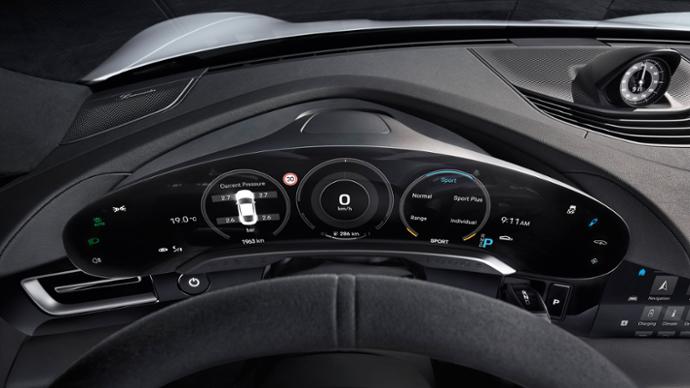


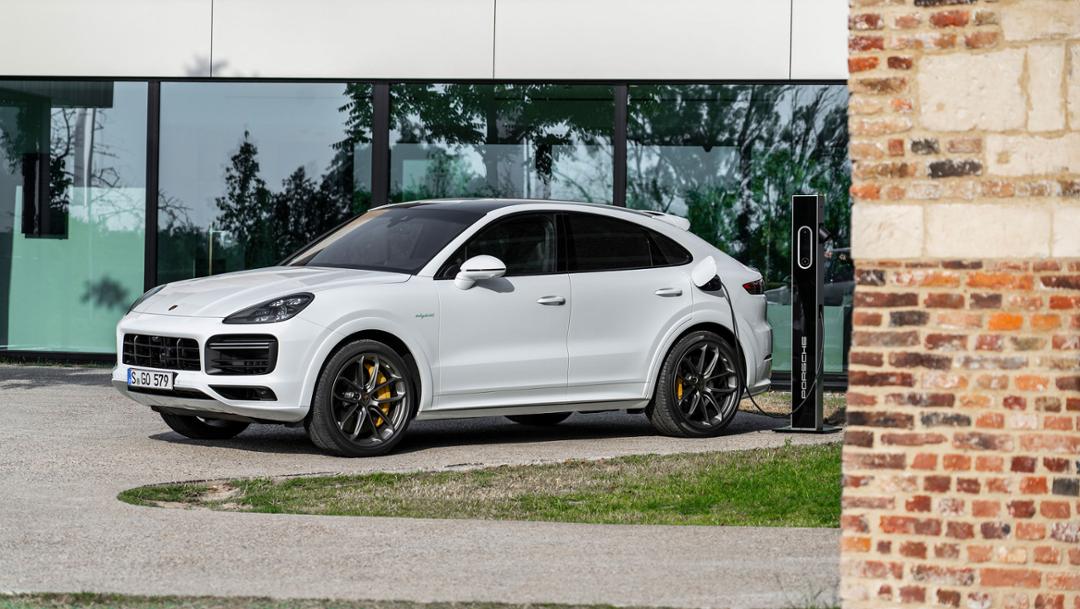

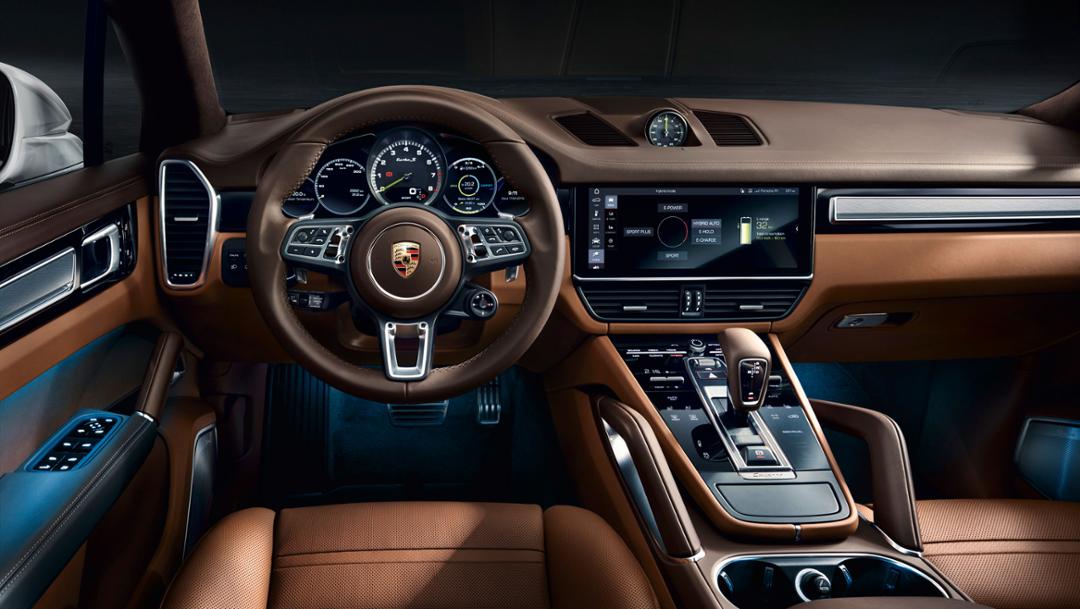
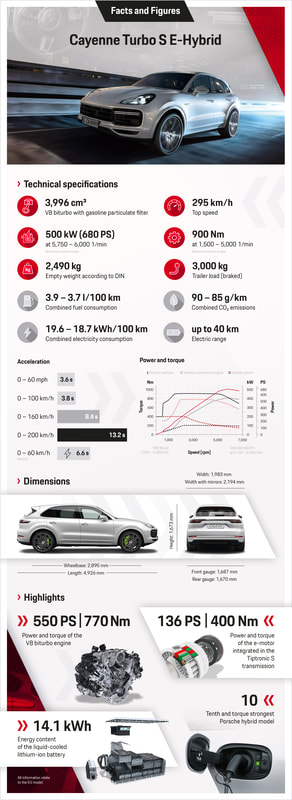




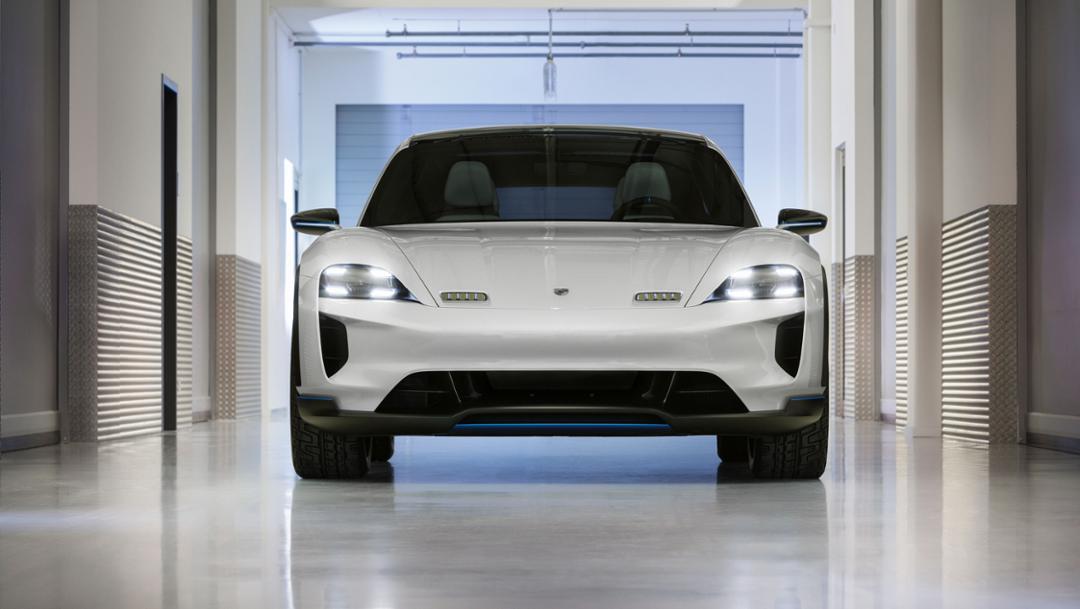
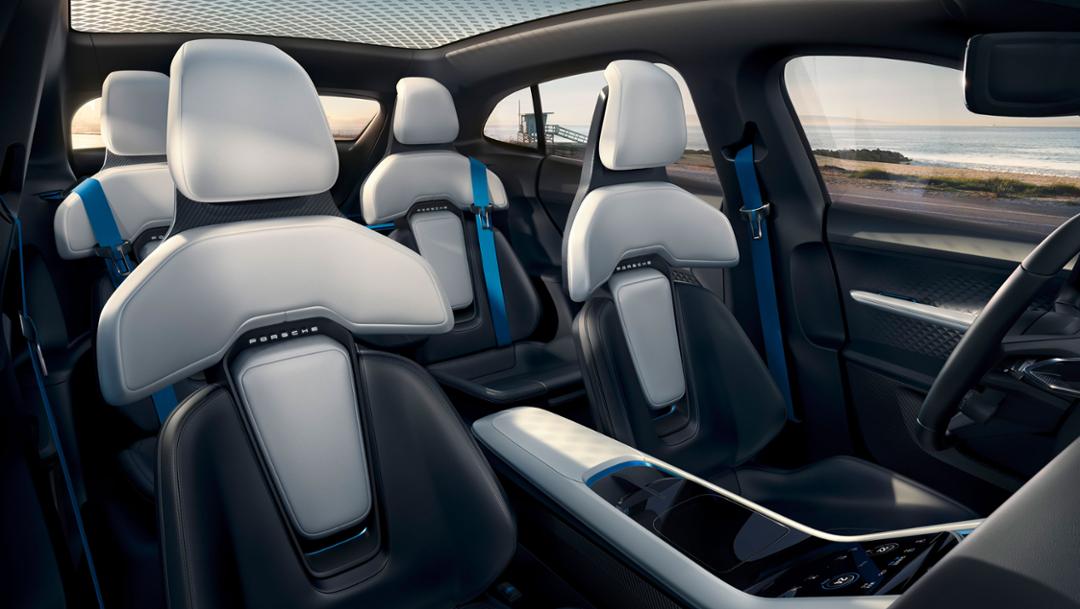
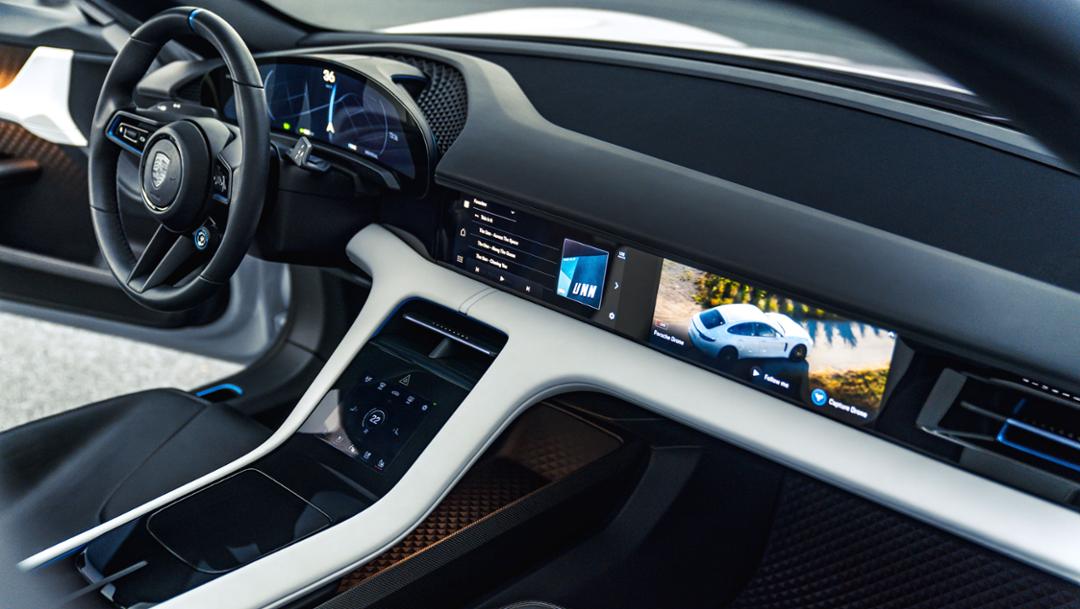



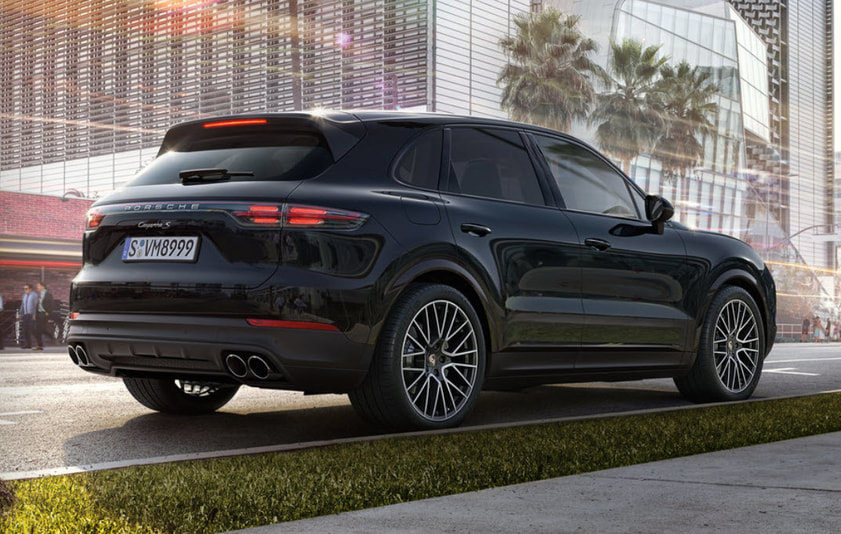

 RSS Feed
RSS Feed